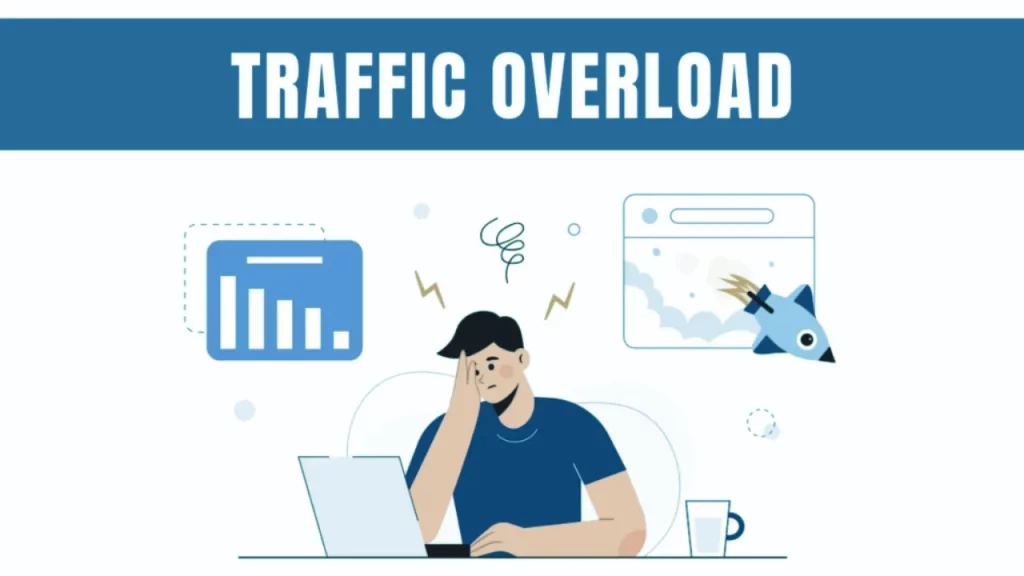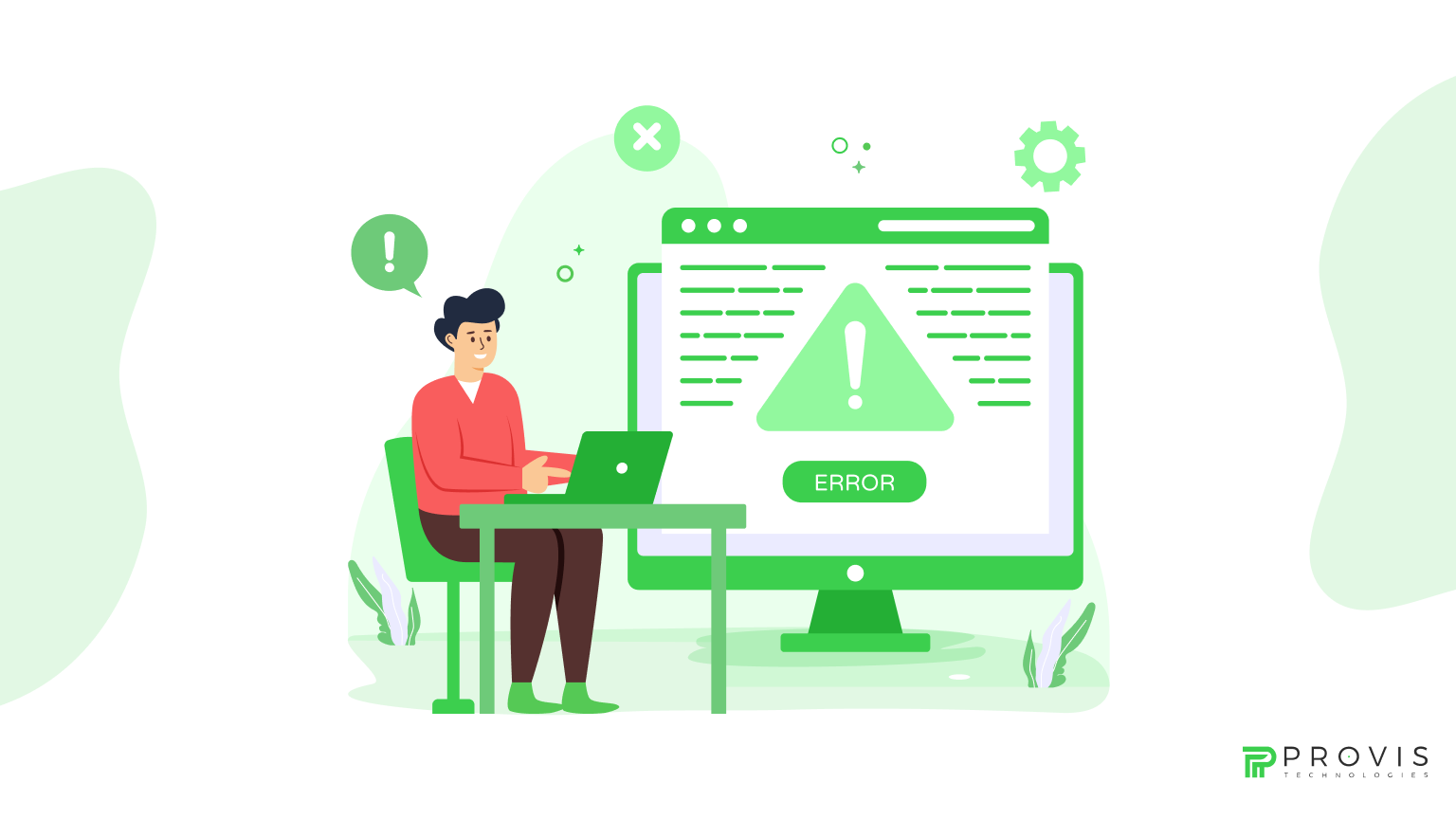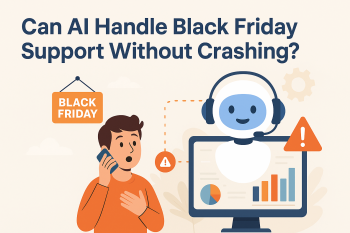If you are running a business online, then the last thing you would want is a website crash. Traffic is what every website aims for; however, a rush of traffic can crash your website. An example of that could be an e-commerce website running a flash sale, aiming to drive sales. Now, as per the plan, the traffic comes to the website, but the website crashes. All the efforts go in vain. One thing is sure that traffic is not a problem; rather, how to prevent website crash from traffic is the real problem.
A website crash not only causes revenue loss but also affects the reputation and credibility of the business. Who would like to opt for an e-commerce website that crashes on sale day? No one is right. That is why it becomes essential to know how to prevent website crash from traffic so that your best sales day doesn’t turn into ‘no sales day’.
Importance of Website Stability
If you want conversion and growth for your business, a website crash is what you should prevent at any cost. Apart from the finances, there is something more that a website crash can impact:
- Business reputation
- Customer’s trust
- Image of the firm (when investors check the stability of the website)
- Marketing investment made to drive traffic
- Search engine rankings and SEO
- Legal penalties (in certain cases)
- Expenditure on damage control
Thus, there is more at stake rather just the revenue when it comes to website crashes. Before we dive into ways to prevent website crash from traffic, it’s important to know what exactly causes this.
Common reasons behind a website crash
Here are some common causes that can lead to a website crash:
- Poor website maintenance: Irregularity in website maintenance is one of the major causes for website crashes. Doing regular maintenance updates during off-times can help prevent a website crash during phases of high traffic.
- DDoS Attack: A Distributed Denial of Service (DDoS) is a deliberate attempt to crash the website. Attackers flood the website with malicious traffic, making it difficult for genuine users to access. The malicious or fake traffic puts a load on the server, causing a website crash. Contacting the hosting services provider can help in this case, as they have experience in handling such issues.
- Effect of bugs: Many a times, websites get crashed due to technical bugs and glitches on your end. This may be a compatibility issue with the new plug-in, an error in backend coding, a hardware-related issue, server misconfigurations, etc. Run a security check at your end on a regular basis, so that you can figure out such bugs on time.
- Database error: If your website is using databases for storing and retrieving information, then this kind of error can lead to website crashes. Corruption of the database, errors with data handling, or sudden load on the database can cause the website crash.
- Host-side errors: Your website can also crash due to an issue at the hosting service provider. A server downtime, network outage, or hardware-related issues are common reasons behind it. Reaching out to the hosting services provider at the earliest is key here. Look for a reputable and reliable hosting service provider in the first place.
Essential tips on how to prevent website crash from traffic

Around 60% of users are likely not to visit a website if they experience a website crash. So, you can understand how important these tips would be if you’re looking to prevent a website crash.
Here are 12 essential tips on how to prevent website crash from traffic:
Load Testing: Checking your website for a traffic load is a first step that you should take. This test involves:
- Simulating high traffic on a website
- Checking website performance under a traffic test
- Preparing an assessment report
These tests help you get an idea of website behaviour under different traffic loads.
- Prepare for scalability: Your website should be prepared for scalability to handle sudden traffic loads. Scalability refers to a website’s ability to handle increased traffic without causing crashes. Opt for:
- Scalable infrastructure like cloud-based service providers
- Enable an auto-scaling mechanism
- Database backup
- Keep monitoring: Monitoring is one of the essential steps to prevent a website crash. Around 74% of IT experts globally rely on proactive monitoring to prevent website crashes.
- Setting up a monitoring mechanism
- Checking real-time updates
- Responding to errors
- Utilize CDN: Content Delivery Networks (CDN) is a network of servers distributed globally. This allows the content to be delivered to the users from the server geographically nearest to them. CDN can prevent excessive load, which is generated on the server when you use a single server.
- Have a backup and recovery plan: Create a plan to have regular backups of the website’s data. This data backup would help you in times of crisis, as your website can quickly come back after a crash. Implement:
- Off-site data storage
- Enabling automated data backups
- Monitoring data backup reports
- The website should be cybersecure: Globally, cybercrimes are expected to hit losses above $10 trillion by 2025. Security audits, using SSL certifications, and updating the website as per the latest cybersecurity standards are best practices to implement.
- Optimize the website: If your website loads quickly, then you can avoid website crashes due to load time. To make your website load faster, use the best SEO practices like:
- Image compression
- Minimizing HTTP requests
- Enabling user-end caching
- Reliable hosting services: As discussed above, the host-side error can cause website crashes. Thus, it is important to opt for a trusted hosting service provider like AWS. A trusted and reliable hosting services provider makes sure that if any issue occurs, it is resolved quickly.
- Use a strong password: Setting a strong password is the best first line of defence to safeguard your website. Opt for passwords as per the strong password guidelines suggested by search engines like Google. Also, ensure to update passwords every 6 months.
- Install a firewall: A Firewall, as per its name, is a protective invisible wall that can block all malicious traffic to your website. As malicious traffic can trigger a website crash due to a DDoS attack, the firewall can come in handy.
- Check for broken links: A Broken link can trigger a website crash. It is thus advised to conduct a regular internal and external links check. These regular checks would help you fix the errors beforehand and secure your SEO rankings as well.
- Responsive website design: Test your website’s responsiveness to different screen sizes. Since the majority of users access websites via smartphones, it’s important that your website loads quickly on all kinds of devices. Also do a browser compatibility check as many times websites that work fine on one browser fails to load on other.
Conclusion
Preventing website crashes are crucial to save your business and reputation. Putting what we discussed into practice can help you prevent website crashes and drive desired results on the sales and revenue front.
Written By
Author's Picks
- WooCommerce Pros and Cons: An In-Depth Analysis
- 18/12/2024
- What is Wix Website Builder and How to Use It
- 17/11/2024
- 10 Must-Know Web Performance Optimization Techniques in 2025
- 05/04/2025
Categories
- AI for Startups
- AI in Web Development
- AI Integration
- AI Platforms
- AI Prompt
- AI Tools
- AI Trading Software
- Android App
- Android vs iOS Development
- Angular
- API
- API Development
- App
- app development
- App Idea
- App User Feedback
- Application
- Artificial Intelligence
- Audit Services
- Automotive Industry
- Awards and Recognition
- Business Consulting
- Business Website
- Chatbots
- CRM
- CRM for Financial Advisors
- Custom CRM
- Custom SaaS
- Custom Website
- Customer Service
- dashboard design
- Developing a Mobile App
- Digital Business
- E-commerce
- EMR Integration
- Finance
- Financial Advisors
- Financial Advisors
- GIT
- Health Insurance
- iOS App
- iOS App Development
- IoT Mobile App Development
- IoT Platforms
- IT Audit Services
- IT Consulting
- IT Strategies
- Java Development
- Laravel
- Lean Canvas
- Learning Management System
- Logistics Apps
- Mobile App Development
- MVP
- Native App
- News Aggregator Site
- OTT
- Outsourcing IT
- Payment Gateway
- predictive analysis
- Product Launch Strategy
- Progressive Web App (PWA)
- Prototype
- Recommender Systems
- Ruby
- SaaS
- SaaS Application
- SaaS Business
- SaaS Company
- SaaS Development
- SaaS Product
- SaaS Project
- Sales Funnel
- SEO
- Shopping Cart
- Software Development
- SSL and TLS
- Startup Checklist
- Technology
- Tetradic Color Scheme
- UI/UX Design Company
- Unit Testing
- User Flow
- User Testing
- Web Development
- Web Performance Optimization
- website Maintenance Services
- Website Migration Service
- Website Speed Optimization
- WooCommerce
- WordPress





